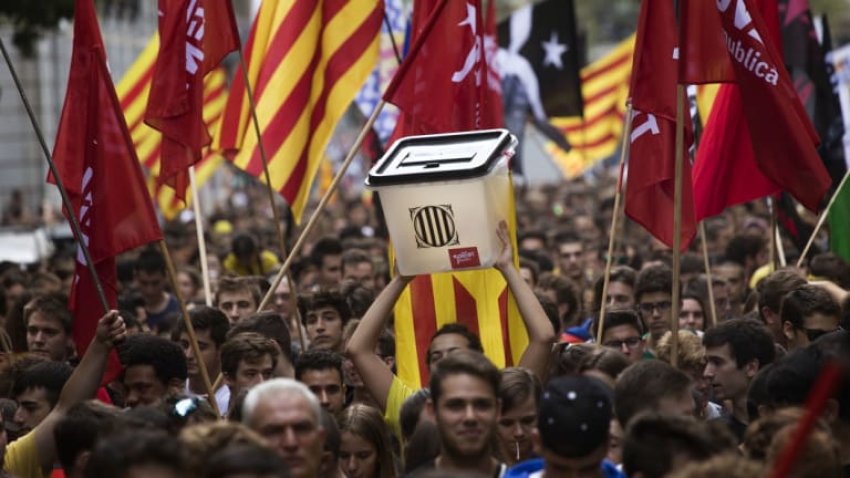
A march of almost 200,000 people in Barcelona on October 1 marked the first anniversary of Catalonia’s independence referendum.
Pro-independence Catalans commemorated the first anniversary of the banned vote, which had to defy heavy repression as the Spanish state sought to stop it taking place. Despite a brutal crackdown by the Spanish police that left 900 people injured, most who voted backed independence.
Protests on October 1 were called via online messaging apps by the Committees for the Defense of the Republic — local activist groups that emerged after last year’s referendum.
Thousands of Catalans rallied to the call and blocked roads, motorways, and a high-speed rail line in Girona, north of Barcelona.
Catalonia’s nationalist President Quim Torra made a symbolic visit to a polling station in Sant Julia de Ramis where Spanish police prevented his predecessor Carles Puigdemont from voting in the referendum.
Torra told the protesters to keep up the pressure. “Everything began on October 1 and everything goes back to October 1,” he said. “The lesson of October 1 and its values are what we need as we face the coming weeks and months.”
In a video message on October 1, the exiled Puigdemont said: “Let us not stray from the only possible way to live in a full democracy: the [Catalan] republic and its international recognition.”
On September 30, 14 people were injured and six arrested after police clashed with pro-independence Catalans in downtown Barcelona. At least one regional police officer was also injured in the riot, according to Catalan authorities.
Nine pro-independence Catalan leaders and civil society leaders were jailed after last year's referendum. Madrid charged Catalan leaders with rebellion and sedition for their “secessionist” efforts.
New Spanish Prime Minister Pedro Sanchez is more conciliatory than his conservative predecessor. However, he maintains that releasing the political prisoners is a judicial matter over which he has no control.
[Abridged from TeleSUR English.]